Hurricane Risk Factors and How to Plan for Them
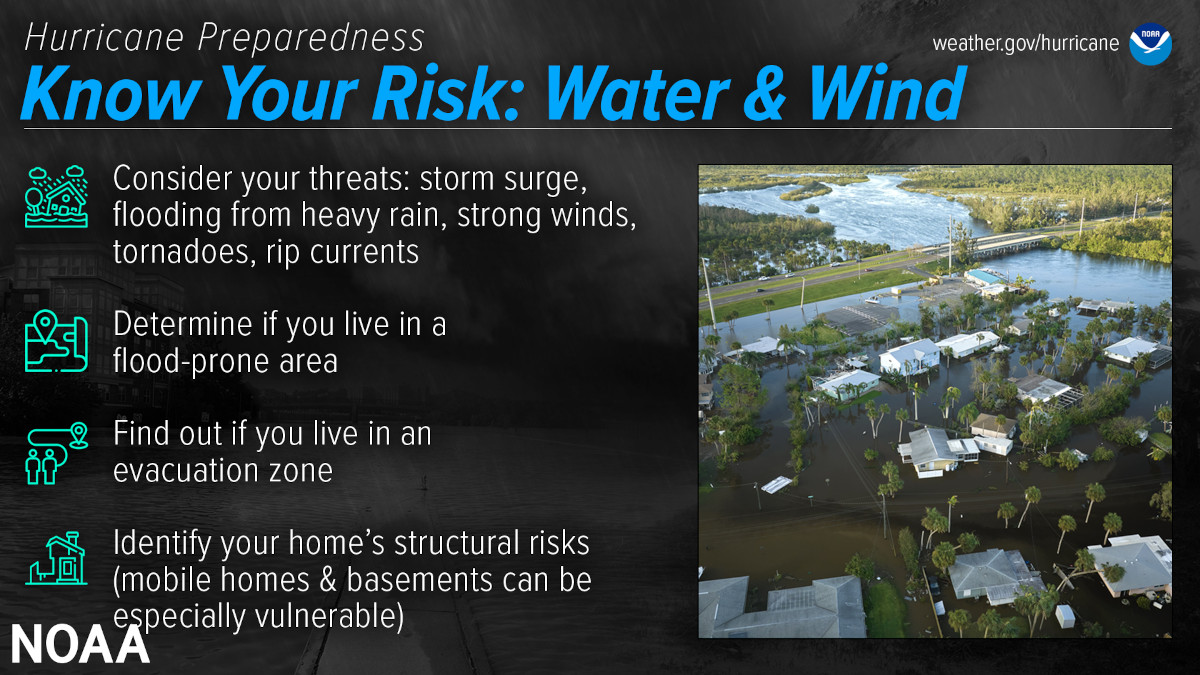
Know Your Hurricane Risk Factors: Storm Surge–Flooding–Extreme Wind–Tornadoes–Power Outages–Rip Current
Hurricane Preparedness Articles
- 7 Step Hurricane Preparedness Plan
- Hurricane Hazards and Risk Factors
- Make a Hurricane Evacuation Plan
- Hurricane Preparedness Kits and Supplies
- Hurricane Insurance Checkup and Updates
- Prepare Your Home for Hurricanes
- Help Neighbors with Hurricane Preparedness
- Complete Your Hurricane Preparedness Plan
- Emergency Preparedness Tips
- How to Prepare for a Power Outage
- 10 Tips to Survive a Hurricane Disaster
- FEMA Recommends a Generator
- Hurricane Disaster Preparedness
Hurricanes: Storm surge. Flooding. Extreme winds. Hurricanes are large, powerful tropical cyclones that wreak havoc, leave destruction in their wake, and take lives. They can occur during any month of the year, but occur most frequently during the Atlantic Hurricane Season which begins June 1 and runs until November 30. The peak months are August, September, and October.
Most hurricanes begin in the tropical Atlantic Ocean or the warm waters of the Caribbean Sea as an area of thunderstorms that gradually organizes into a cyclone. The right combination of low pressure, warm ocean water, and hot, humid air form a Tropical Depression (TD) with sustained winds of up to 39 MPH and a circular (cyclonic) motion as it moves across the water. The tropical depression gains energy as water evaporates from the warm ocean surface and then releases the energy when it condenses in the clouds. If the storm gains enough energy and structure it becomes a Tropical Storm (TS) with winds up to 73 MPH.
The National Hurricane Center names tropical storms using a five-year list. Storms retain their names as the strength changes whether growing into a hurricane or diminishing to a tropical depression. If the sustained (average speed over one minute) winds surpass 73 MPH, the NHC reclassifies the storm as a Hurricane. They become major hurricanes at Category 3 with winds of 111 MPH or higher.
The diameter of Tropical Cyclones range from 60 miles to more than 1200.
Top 5 Generators for Emergency Power
The Risks
Storm Surge and Flooding cause more damage and take more lives than all other risks combined. Although Extreme Wind causes its share of damage, devastating flooding and the surge of water that moves ahead of the hurricane are the primary risks associated with a hurricane or tropical storm.
Storm Surge
The extreme winds and category strength of a hurricane get the most press and airtime, but the storm surge that accompanies landfall of the storm is more dangerous and poses a greater risk to life and property. Storm surge causes 90 percent of all deaths attributed to hurricanes when people are caught in the rapidly rising water.
 The inward spiraling winds of the hurricane push water into a dome near the center of the storm. The dome can grow quite high in a strong storm and it moves with the hurricane. Higher atmospheric pressure near the edges of the storm press down on the water, causing it to rise near the center of the storm where the pressure is much lower.
The inward spiraling winds of the hurricane push water into a dome near the center of the storm. The dome can grow quite high in a strong storm and it moves with the hurricane. Higher atmospheric pressure near the edges of the storm press down on the water, causing it to rise near the center of the storm where the pressure is much lower.
When Katrina came ashore in 2005, the storm surge reached 25 feet and up to 41 feet in specific communities. Water from the surge reached inland up to 12 miles and the storm levees and barriers were breached in 58 places.
Low-lying coastal areas that are below, near or at sea level are at the most risk from storm surge. The surge level varies by location in part due to water depth, the slope of the land, and the tide at the time the storm makes landfall. Waves on top of the storm surge can raise the water level even more.
How to Use a Portable Generator for Emergency Power
Flooding
 Storm surge floods large areas over a relatively short period, especially if the hurricane makes landfall in an area with wide areas of low-laying land. Further inland, torrential rains cause flooding and flash floods. Sometimes it is the less powerful storms that carry and drop more water. Tropical Storm Allison left large portions of Houston, Texas under water after inundating the city with 40 inches of rain. More than 30,000 were left homeless after floods made 70,000 homes uninhabitable. The flooding caused severe damage to businesses and institutions in downtown Houston.
Storm surge floods large areas over a relatively short period, especially if the hurricane makes landfall in an area with wide areas of low-laying land. Further inland, torrential rains cause flooding and flash floods. Sometimes it is the less powerful storms that carry and drop more water. Tropical Storm Allison left large portions of Houston, Texas under water after inundating the city with 40 inches of rain. More than 30,000 were left homeless after floods made 70,000 homes uninhabitable. The flooding caused severe damage to businesses and institutions in downtown Houston.
Torrential rain in North Carolina following Hurricane Helene caused devastating flooding that left roads impassable and communities stranded for months.
As waters rise, escape becomes virtually impossible during the storm. Moving water will carry cars and trucks off the road into deeper water. Trees fall and block roads. People trying to escape by car could encounter a river over a roadway and turn around only to find the route back to where they came from blocked by another flash flood or a fallen tree.
Floods and flash floods hide dangers like washed out roads, fallen electrical lines, and debris. Stay out of flood water. Never drive a car into moving water.
Rivers, creeks, lakes, and estuaries overwhelmed by torrential rain flood the surrounding area as the storm surge pushes the water even higher.
Norwall's Rebate and Referral Program
Wind
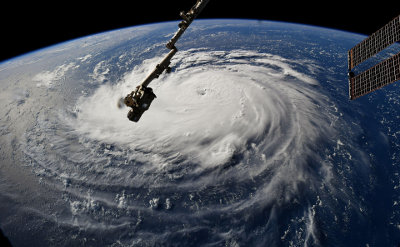
Although the extreme wind makes dramatic news and can rip houses to pieces or topple trees, Inland Flooding and Storm Surge cause 75 percent of the damage and nearly all of the deaths associated with hurricanes.
Winds are strongest in the area immediately outside the eye and weakest at the outer reaches of the storm. The air and moisture spirals inward and like a figure skater that gradually pulls her arms close to her body, it spins faster and faster. Spiral shaped arms or bands extend outward from the eye. From space, it looks like a giant pinwheel.
As the warm, moist air rises, it rushes toward the center of the storm and spirals up to the top of the troposphere. The moisture in the air condenses which adds to the water in the clouds and releases energy in the form of heat. The cooler air spirals outward above the rain bands and falls back to the ocean between them. Meanwhile, cold air from above the eye falls through it, creating an area of calm within the eye.
If the storm moves over saturated land that is warm enough, the cyclone can maintain or increase in strength. This is sometimes called the Brown Ocean Effect.
Hurricane force winds are sustained wind speeds of 74 MPH or greater. Sustained wind speeds of the some of the strongest hurricanes reach 185 and 190 MPH. It doesn’t take 180 MPH wind to cause damage or injury however. Even category 1 and category 2 storms are dangerous and the wind will turn virtually any object into deadly projectiles that can impale, crash into, or even decapitate anyone outside. Unprotected windows are broken allowing the wind and rain or more debris to enter a home. Loss of windows or doors can result in structural damage to the roof and frame.
Best Generator for Whole House Power
Rip Currents and Rough Surf
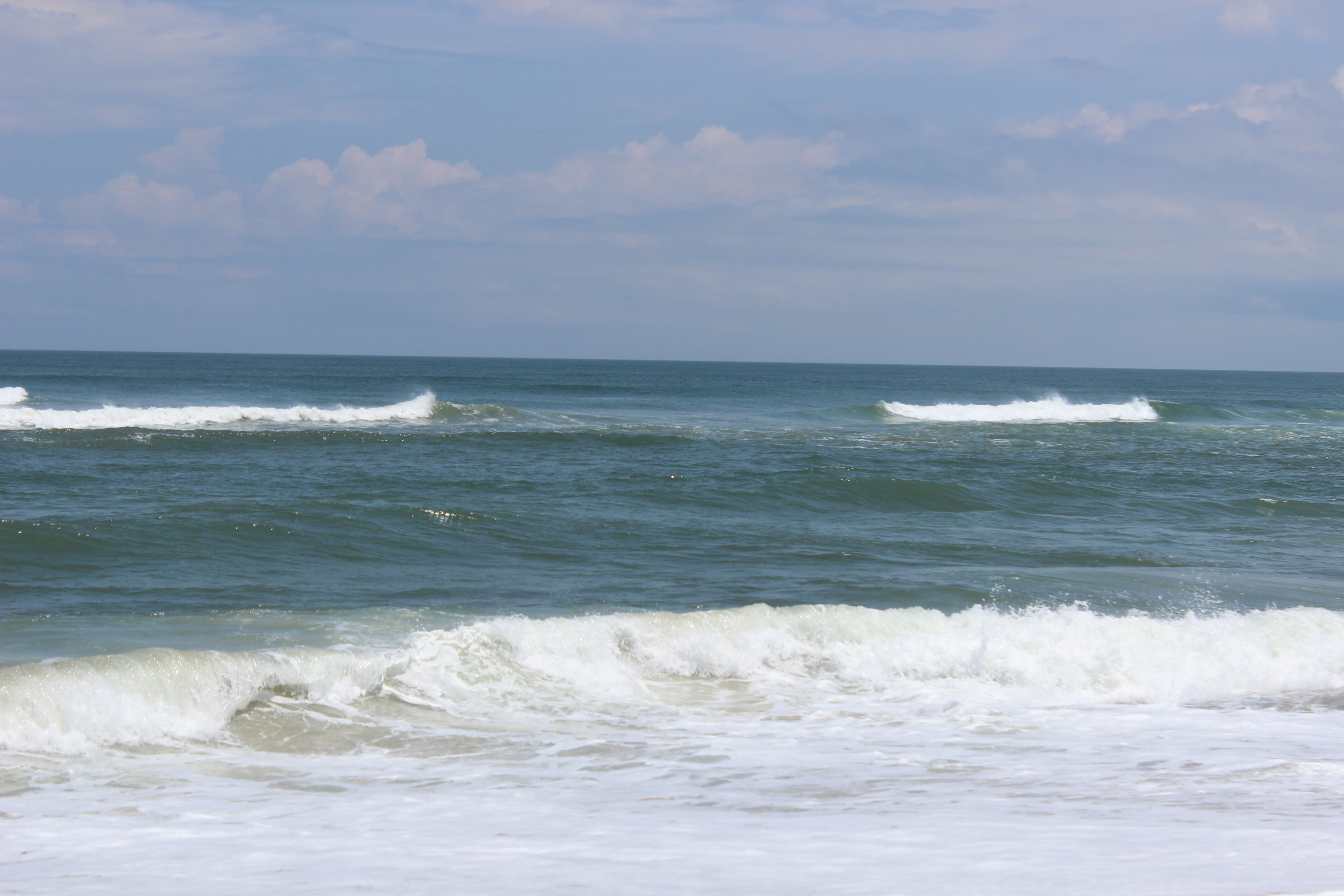
In this image, notice the break in the incoming wave pattern and the difference in water color. This marks the Rip Current where it flows out, away from shore, instead of moving in with the line of waves.
The heavy surf that appears when a hurricane is hundreds of miles and days away from land is dangerous. Every year, the news reports on swimmers and beach goers who drowned in heavy surf or a rip current. Incorrectly called an undertow or rip tide, the current forms where a sandbar makes a channel, or where piers or jetties interfere with the normal flow of water. A rip current is usually strongest near the bottom. Someone standing in a rip current can be knocked off their feet, which makes it feel like the current is pulling them down, thus the "undertow" name.
Days before a hurricane approaches land, the effects of the storm begin reaching the coast with heavy surf conditions and rip currents. Rip currents flow opposite the waves—moving away from shore—for up to a half mile or more. It is not always easy to see a rip current, but the strong current can carry a swimmer far from shore. Swimming against the current is useless. Even the strongest swimmers will be carried away from shore.
Look for:
- A Channel of choppy water
- A line of foam or seaweed
- Notably different water color
- A break in the incoming wave pattern.
Escape a Rip Current by Swimming Parallel to Shore, not toward the shore. The current will carry you out until you swim out of it. Swimming parallel to shore will get you out of the current before it carries you beyond the breaking waves, making it a shorter swim to shore once you escape the current.
The NOAA Advises
- Always Swim with a Buddy
- Swim Near Life Guards
- Learn How to Spot a Rip Current
- Learn How to Escape a Rip Current
Heavy surf makes great news coverage and it's spectacular to watch. However, an unexpectedly high wave can knock watchers off piers, rocks, and other structures. The receding wave can carry people quite far and if they are caught in a rip current, it may take them a long ways from shore.
Rip Currents and Heavy Surf are dangerous to swimmers and beach goers. Be aware of the danger, know what to look for, and if there's any doubt, stay out of the water.
Utility Interruptions
Power outages are very common and leave millions of people without power during and after a hurricane. It may take crews days or even weeks to restore power. After Hurricane Sandy, some residents were still without utility electrical power five weeks after the storm. Very often, crews must rebuild entire sections of the distribution network which takes time.
Community water becomes contaminated by the flooding and if sewage treatment plants are flooded, the community sewer system fails as well. Boiling water may not be enough to purify it as chemicals and other contaminants make it unsafe for drinking or washing. When sewage plants are flooded, the surrounding flood waters are also contaminated making it dangerous to enter the water.
Although less of a factor in modern times, interruption of phone service is still an issue. Today, most people have cell phones which have proven more reliable during disasters including hurricanes. A smart phone provides access to the internet and social media in addition to news, weather, emergency, and disaster recovery efforts.
Home Standby Generators for Basic Needs
Tornadoes
The cyclonic nature of a hurricane or tropical storm can spawn tornadoes—another cyclone even though the worst of these is many times smaller than a hurricane, they cause devastating damage as they travel along the ground.
Katrina spawned 45 or more tornadoes, five as far north as Pennsylvania. Most tornadoes spawned from hurricanes don’t last very long, but a direct hit can cause damage or threaten life. Even an F1 can cause serious injury or death.
Buyer Guide: What Size Generator Do I Need
Emergency Service Interruptions
Emergency medial, ambulance, fire departments, hospital and emergency rooms have limited personnel that may not have access to some locations. EMTs, fire departments, and police departments may have difficulty reaching a house or an area due roads blocked by flooding or fallen trees. These services are often overwhelmed with calls for help during a hurricane.
Some departments work directly to mitigate the disaster even as it takes place which makes it more difficult to respond to emergency calls.
Calling for help during or after a disaster is often difficult. Phone calls don’t go through because the system is overwhelmed while and call centers are swamped with requests. Once you do get through, you may have a long wait before talking to someone. Once you do get through, help may not arrive until well after the storm has passed.
4 Ways to Stay Safe During a Power Outage
Mitigate Your Risks
Learn what risks factors will have the greatest impact on you. If you live thirty miles inland from the coast in a house fifty feet above sea level, storm surge probably won’t affect your home very much. The surrounding floods might and so will the power outages and other utility interruptions. Difficulty leaving the area or obtaining emergency service at the height of the storm are still factors to consider and so is the extreme wind.
Evacuations
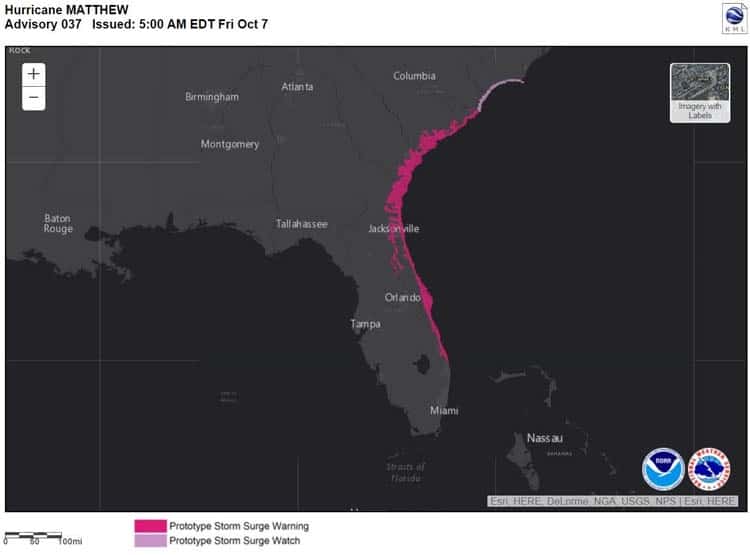 Contact your local government to learn about their disaster plans. Websites and printed information will detail how local officials have planned to deal with a hurricane. Find out if you live in an evacuation zone and follow your evacuation route to become familiar with it. Anyone within the path of a hurricane who lives in an evacuation zone should be prepared to leave as soon as the order is given.
Contact your local government to learn about their disaster plans. Websites and printed information will detail how local officials have planned to deal with a hurricane. Find out if you live in an evacuation zone and follow your evacuation route to become familiar with it. Anyone within the path of a hurricane who lives in an evacuation zone should be prepared to leave as soon as the order is given.
There is more to planning than knowing your evacuation route however. Being ready to leave means you only need a few hours to prepare the house, pack the car with a premade portable disaster kit and your luggage, and then leaving before the roads are clogged with others.
The best time to leave is before any evacuation orders are given.
Standby Generators: How They Work
House Preparations
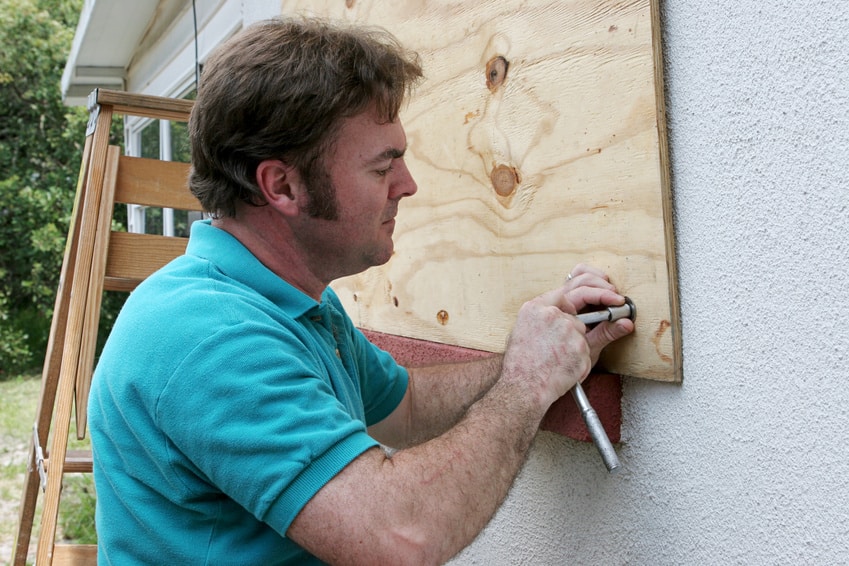 Find out if your home is current with building codes to withstand a hurricane. The addition of hurricane straps and ties on the house roof structure and framing can make the difference between coming home to a pile of sticks versus needing a new roof and some siding repairs.
Find out if your home is current with building codes to withstand a hurricane. The addition of hurricane straps and ties on the house roof structure and framing can make the difference between coming home to a pile of sticks versus needing a new roof and some siding repairs.
Hurricane shutters are a permanently installed option that protects windows and doors. Another tried and true method is 3/4-inch plywood that is cut to size and screwed directly to the house framing. These are cut to size, labeled for placement, and predrilled for screws. Don’t forget that your garage door is the most vulnerable and needs protection and a possible upgrade.
Remove weak trees and dead limbs or weak limbs from your yard. Put anything that moves—lawn chairs, grills, trash cans, and toys are just a few examples. If the playset isn’t securely fastened to the ground, take it apart and move it into the garage. All are items that could become a projectile and damage your home or cause injury.
Disaster Kits
There are too many items to list here, but a few include enough non-perishable food and water for one week. Each person needs a gallon of water for drinking and for washing. Other items to consider are personal hygiene and first aid. All of it should be easily packed and moved to the family car for a quick exit in the event of an evacuation.
Include food and water for your pets and don't leave them behind when you evacuate.
Make lists. Print them out. Keep them with your hurricane disaster plan so nothing is forgotten in the rush as you prepare for the storm or get ready to evacuate.
Utilities
All homes should some form of backup electricity. If you live anywhere near the coast, loss off electrical power during a hurricane is likely. Standby generators are the best option. They operate automatically on natural gas or propane gas and will run for days or even weeks without the need to refuel every few hours. Portable generators offer a less reliable option. Fuel must be stored and once it is exhausted, obtaining more is difficult.
Before the storm, fill containers with water for drinking, hygiene, and sanitation. Food-grade five-gallon buckets with water-tight lids are perfect for washing or drinking water, but they are difficult to transport. Three and five gallon jugs are better. Regular lidded buckets are good flushing toilets—a water saving toilet only needs a couple of gallons. Use sparingly until the local utility restores water.
Family Preparations
Everyone should know the plan from small children to college-age teens to adults still living at home. Involve the entire family in the planning. Make the plan according to the risks you’ve identified and the best way to mitigate them. Write the plan down and print it out, then share the location where you will keep it with your family.
Just as importantly, share your plan for contacting family members and friends whether you evacuate or stay home to ride out the storm.
Prepare Now for the Atlantic Hurricane Season
Updated May 3, 2025
